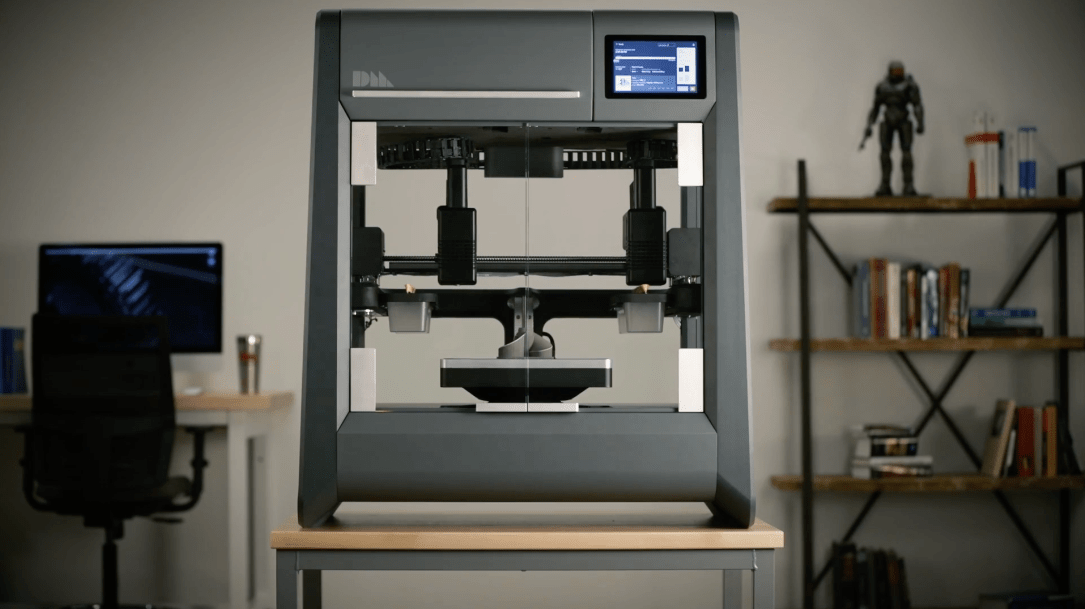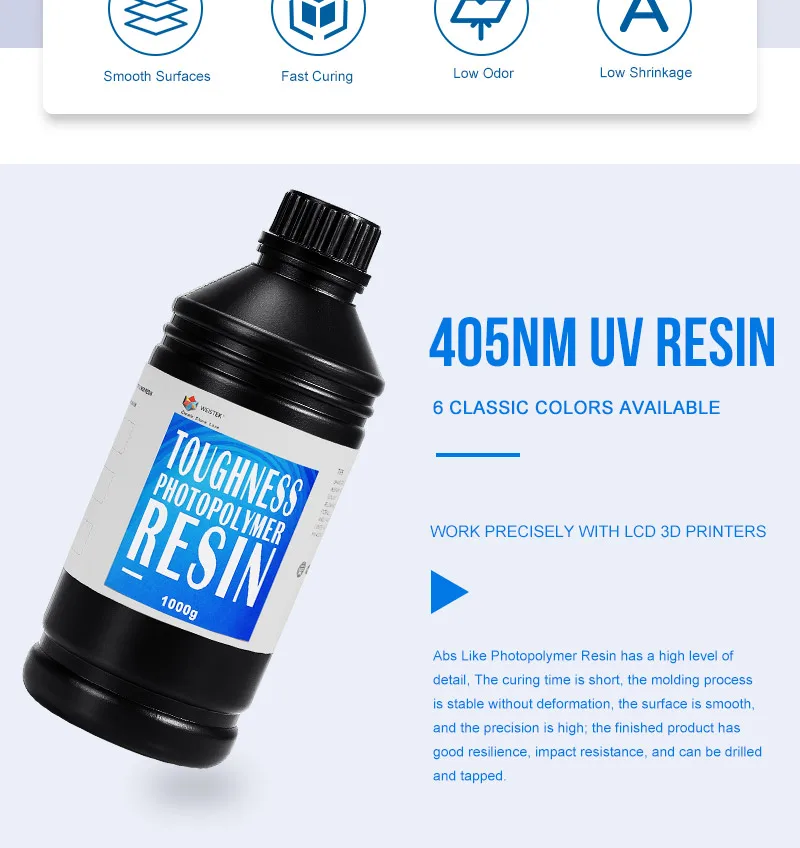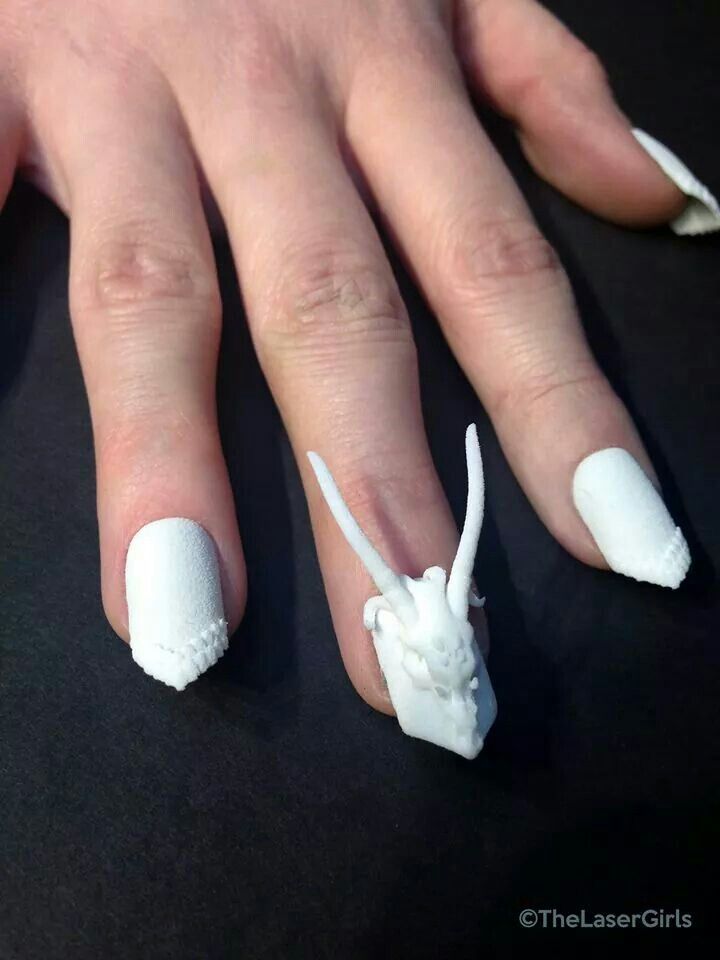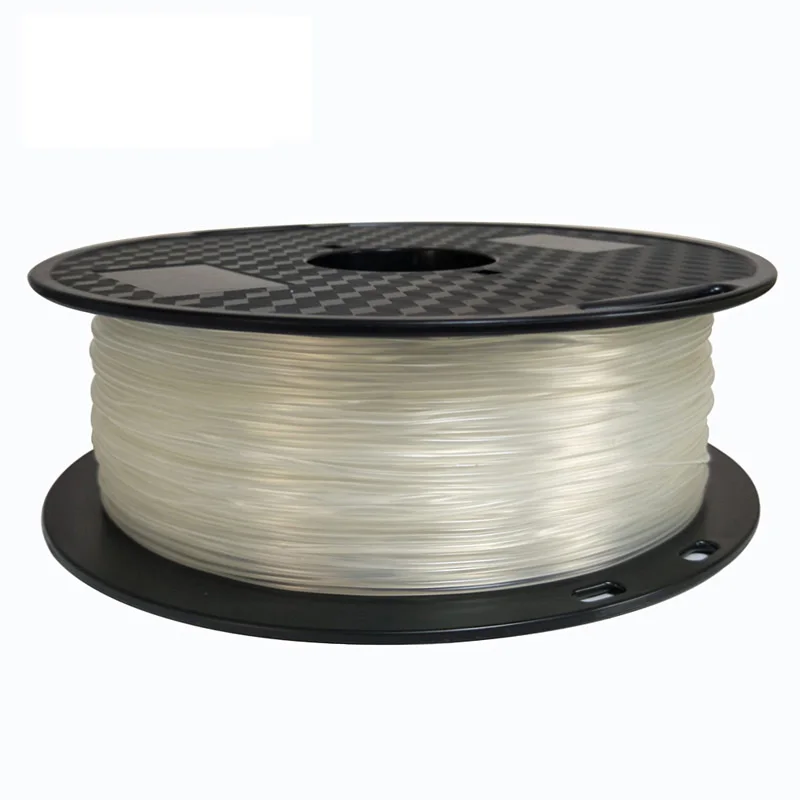Metal 3d printing youtube
The Metal X 3D Printing System
An accessible end-to-end metal 3D printing solution for functional metal parts, next-day.
Request a Quote
The Metal X System is an accessible way to fabricate complex metal parts in a wide variety of advanced metals.
Simple, Yet Powerful
The Metal X is one of the most intuitive metal 3D printers available today. Print a wide range of materials from stainless steels to copper with minimal training on a closed workflow. Scaling up capacity is easy; just add printers.
Safe and Affordable
The Metal X is designed to be safe to use and accessible for all fabricators. It costs several times less than DMLS metal 3D printing systems and requires no dedicated operator, no powder management system, and minimal PPE.
Quality Parts, Fast
The Metal X is purpose-built for consistent part quality and a seamless user experience. Markforged combines superb software, materials research, and an advanced motion system to deliver industrial-grade parts quickly and reliably.
Specs
From design to fully functional
metal parts in as few as 28 hours.
Physical Dimensions
| Width | 575 mm |
| Depth | 467 mm |
| Height | 1120 mm |
| Weight | 75 kg / 165 lbs |
Build Volume
| Width | 300 mm |
| Depth | 220 mm |
| Height | 180 mm |
Printer primary Specs
- Printing Process
- Metal FFF
- Z Layer Resolution
- 50 μm - 125 μm (Post-Sinter)
- Printing Media
- Bound Powder Filament
- Internal Part Geometry
- Closed Cell Infill (Triangular) or Solid Parts
- Print Bed
- Heated, Auto Leveling, Replaceable Print Sheets
Wash & Sinter
Wash-1
- External Dimensions:
- 609 x 685 x 1,067 mm
- Weight:
- 136 kg (300 lbs)
- Washing Time:
- 12-72 hrs typical
- Solvent:
- Opteon SF-79
- Working Volume:
- 356 x 254 x 203 mm
Sinter-2
- External Dimensions:
- 1,200 x 700 x 1,500 mm
- Weight:
- 350 kg (772 lbs)
- Run Time:
- 17-31 hours
- Sintering Volume:
- 18,356 cu cm
- Peak Internal Temp.
 :
: - 1,300° C / 2,372° F
Materials
Compatible Materials
- Release Material
- Ceramic — Becomes Powder During Sintering Process
- Media (Spools)
- Bound Powder Metal Filament
System Details
Metal X PrinterThe Markforged Metal X is a new kind of metal printer. By printing metal powder bound in a plastic matrix, Markforged has eliminated many of the safety risks associated with traditional metal 3D printers. That means no loose powder, no lasers, and none of the traditional safety precautions. It’s safe to use in a shop environment with minimal facility upgrades.
In practice, the Metal X is essentially a very advanced FFF 3D printer. Featuring a precision machined gantry, a heated chamber and print bed, and advanced extrusion hardware, the Metal X is equipped to reliably print you durable parts. It is intentionally designed, with wear components and consumables — including print sheets, nozzles, and brushes — accessible and trivial to swap.
Featuring a precision machined gantry, a heated chamber and print bed, and advanced extrusion hardware, the Metal X is equipped to reliably print you durable parts. It is intentionally designed, with wear components and consumables — including print sheets, nozzles, and brushes — accessible and trivial to swap.
The Wash-1 is a solvent-based debinding system. It primarily uses Opteon SF-79, a high-performance fluid designed to offer superior cleaning power, higher efficiency, and safety in an environmentally sustainable way — Opteon SF-80 or Tergo Metal Cleaning Fluid can be substituted if needed.
The Wash-1 operates with simple ventilation and features an extremely simple user experience. It’s been tested and verified as a shop-safe system.
Sinter-2 and Sinter-1The Markforged Sinter-2 and Sinter-1 are highly optimized tube furnaces used for sintering 3D printed metal parts. They provide leading edge sintering reliability and run times and are equipped with advanced safety features.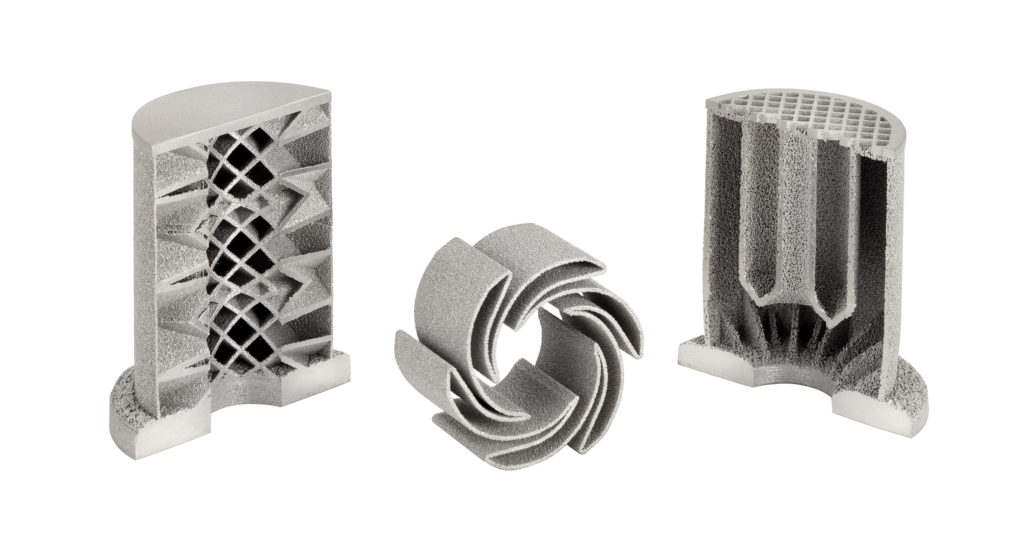 The Sinter-2 is more advanced than the Sinter-1 — featuring a larger working volume, more precise temperature control, and a mechanical door interlock.
The Sinter-2 is more advanced than the Sinter-1 — featuring a larger working volume, more precise temperature control, and a mechanical door interlock.
The Sinter-1 and Sinter-2 typically have run times between 26 and 31 hours. However, the Sinter-2 can process small parts in express mode, where it can sinter up to 250g of parts in just 17 hours.
Download Datasheet
Materials
From stainless steel to copper,
choose from a wide range of strong,
durable, and capable materials.
The best 3D printing YouTube channels in 2021
Many new 3D printing YouTubers run successful channels, and many 3D printing creators have grown tremendously – from a few subs to a few thousand in a few months, sometimes way more!
We spend a lot of time exploring YouTube and searching for great video content on additive manufacturing to create the most comprehensive list of 3D printing YouTube channels to date.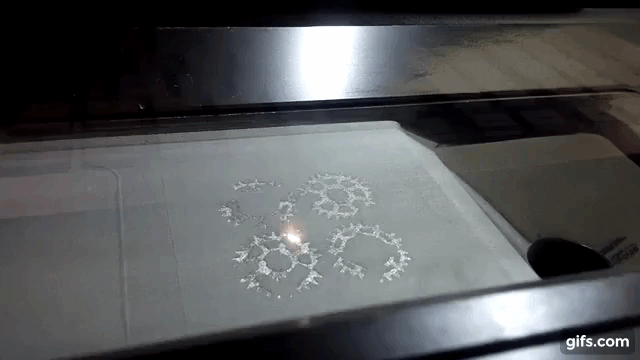
From 3D printer unboxing to filament reviews, 3D printing tutorials, how-to’s, live streams, and more, discover more on 3D printing with the channels below. We highlighted the super fast-growing channels with a little fire emoji (growth rate above 500% in terms of subscribers between March 2017 and September 2018).
List of the best 3D printing YouTube channels
| YouTube channel | Subs count (Sep’ 2018) | Growth rate** | Category | Country |
|---|---|---|---|---|
| I Like To Make Stuff | 2,033,244 | 70% | Maker | US |
| Barnacules Nerdgasm | 940,569 | 10% | Tech reviewer | US |
| James Bruton | 603,301 | 34% | Cosplay/props | UK |
| Naomi ‘SexyCyborg’ Wu 🔥 | 560,520 | 3119% | Maker | China |
| Punished Props | 363,008 | 114% | Cosplay/props | US |
| Maker’s Muse | 331,814 | 355% | 3D printing | Australia |
| Make Anything // 3D Printing Channel | 300,629 | 134% | 3D printing | US |
| RCLifeOn 🔥 | 285,293 | 591% | Tech reviewer | Sweden |
| 3D Printing Nerd | 258,855 | 225% | 3D printing | US |
| Thomas Sanladerer | 172,519 | 123% | 3D printing | Germany |
| 3D Print Guy | 131,052 | 374% | 3D printing | Canada |
| Uncle Jessy | 86,445 | 361% | Cosplay/props | US |
| Ivan Miranda | 77,732 | – | Maker | Spain |
| Gear Down For What | 65,043 | – | Maker | US |
| Tech3C | 47,557 | 99% | 3D printing | Australia |
| 3D Maker Noob 🔥 | 37,184 | 1254% | 3D printing | Malta |
| Jaidyn Edwards | 34,328 | 14% | Maker | Australia |
| Chaos Core Tech | 32,073 | 370% | 3D printing | US |
| CHEP 3D Printing | 25,410 | 69% | 3D printing | US |
| ModBot | 23,982 | 27% | Tech reviewer | US |
| 3D Printing Professor | 21,431 | 250% | 3D printing | US |
| Mold3D TV | 20,636 | 63% | 3D printing | US |
| The Hot End | 18,386 | 137% | 3D printing | Australia |
| PRINT THAT THING | 17,740 | 21% | 3D printing | US |
| DIY Engineering 🔥 | 14,943 | 514% | Maker | US |
| Hoffman Engineering | 13,295 | 91% | 3D printing | US |
| A Pyro Design | 13,091 | 224% | 3D printing | US |
| Richard Horne | 11,427 | 41% | 3D printing | UK |
| NeatherBot | 11,227 | 93% | Maker | US |
| Daniel Norée | 11,227 | 102% | Maker | Sweden |
| ProfDrafting | 10,637 | 130% | 3D printing | US |
| Kirby Downey | 10,609 | 7% | Cosplay/props | UK |
| 3D Print – Tech Design | 10,398 | 92% | 3D printing | Sweden |
| Nerdly | 9,991 | 340% | 3D printing | US |
| 3D Central | 9,716 | 55% | 3D printing | US |
| Joe Mike Terranella | 9,480 | 180% | 3D printing | US |
| FugaTech 3D Printing | 9,256 | 619% | 3D printing | US |
| Jimmy Shaw’s Tidbits 🔥 | 8,583 | 545% | 3D printing | US |
| Simone | FNTSMN | 7,952 | 6% | 3D printing | UK |
Mr.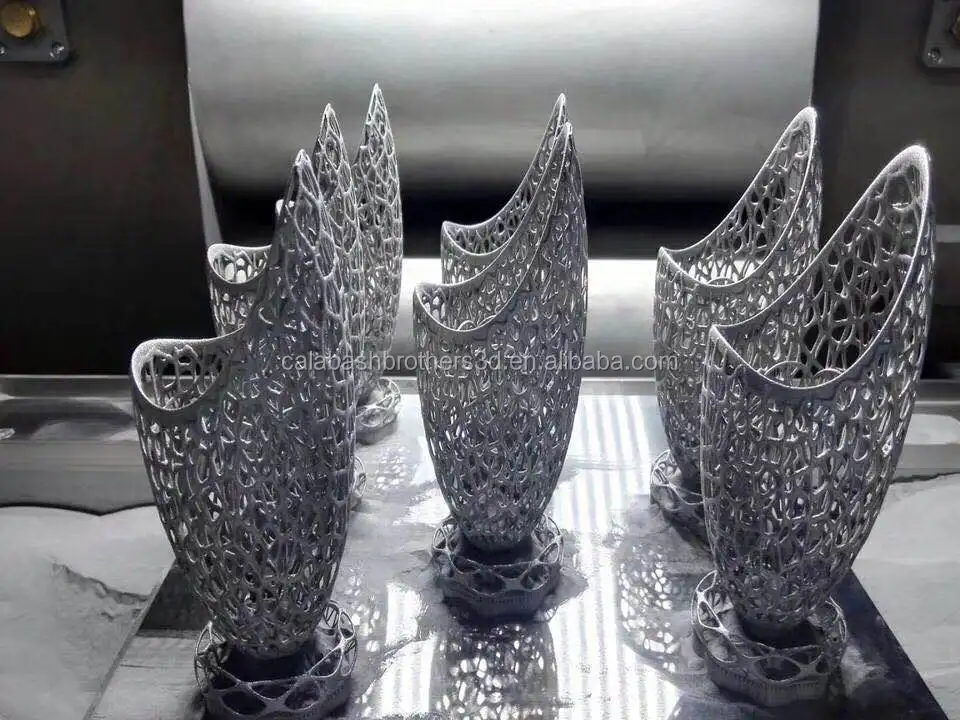 Crankyface Crankyface | 7,441 | 153% | Maker | Sweden |
| Zbysek Pilny | 7,214 | 333% | Maker | Czech Republic |
| The 3D Print General | 6,723 | – | 3D printing | US |
| Desktop Makes 🔥 | 6,719 | 977% | 3D printing | US |
| That 3D Print Guy | 6,201 | 258% | 3D printing | Australia |
| JAT.MN | 5,769 | 80% | 3D printing | US |
| 3DprintedLife | 5,511 | 26% | 3D printing | US |
| Make It And Fake It 🔥 | 5,422 | 271000% | 3D printing | US |
| Print 3D Channel 🔥 5,406 798% 3D printing US | 5,406 | 798% | 3D printing | US |
| TashTech | 5,190 | 71% | 3D printing | South Africa |
| Novice Expert | 4,662 | 68% | 3D printing | US |
| Think Making | 4,662 | 160% | 3D printing | Honduras |
| Nillabean | 4,588 | 80% | Tech reviewer | US |
| doodaddoes | 4,581 | 33% | 3D printing | US |
| Andreas Hölldorfer | 4,336 | 29% | Tech reviewer | Germany |
| XYZAidan | 4,284 | 252% | Tech reviewer | US |
| 3D Print Everything | 4,125 | 261% | 3D printing | US |
| 3d Print Creator | 3,629 | 147% | 3D printing | Netherlands |
| Abuzz Designs | 3,605 | 127% | 3D printing | US |
| BusyBotz | 3,406 | -1% | 3D printing | US |
| D-Tech | 3,314 | 297% | 3D printing | US |
| Model3D | 3,301 | 114% | 3D printing | UK |
| Practical Printing 🔥 | 3,270 | 4709% | 3D printing | US |
| Bobot’s Trains and Maker Zone | 2,990 | 36% | Maker | US |
| PatchBOTS | 2,928 | – | Cosplay/props | US |
| Dream 3D | 2,916 | 60% | 3D printing | UK |
| TGAW | 2,909 | 27% | 3D printing | US |
| SparkyFace5 | 2,721 | 9% | 3D printing | Australia |
| Dustin Corbin | 2,589 | 82% | 3D printing | US |
| 3DPrintingEverything | 2,224 | 90% | 3D printing | US |
| Afro3dprinter 🔥 | 2,136 | 979% | 3D printing | UK |
| Jeremy S Cook | 1,931 | – | Maker | US |
| Maker Hacks | 1,760 | 144% | Maker | US |
| NolanC 3DPrint Works | 1,589 | 109% | 3D printing | US |
| N Squared | 1,589 | 116% | 3D printing | US |
| Improper Engineering | 1,219 | 357% | 3D printing | US |
| 3D Printing Lab | 1,212 | 77% | 3D printing | US |
| How I Do It 🔥 | 1,054 | 1251% | Maker | US |
| Extruder Joe | 1,044 | 83% | 3D printing | US |
| 3DWithUs | 1,034 | 240% | 3D printing | UK |
| Agustin Flowalistik 🔥 | 1,029 | 586% | 3D printing | Spain |
| Potent Printables | 834 | – | Maker | US |
| Three-Dee Kid 🔥 | 801 | 685% | 3D printing | UK |
| Cat 🔥 | 581 | 976% | 3D printing | Liechtenstein |
| Disrupt It Yourself | 570 | 153% | 3D printing | US |
*Number of channel subscribers as of September 13, 2018
** Growth rate of the channel between March 2017 and September 2018
This list of 3D printing-related YouTube channels aims not to rank them by quality but to provide a comprehensive overview of the 3D printing landscape on YouTube.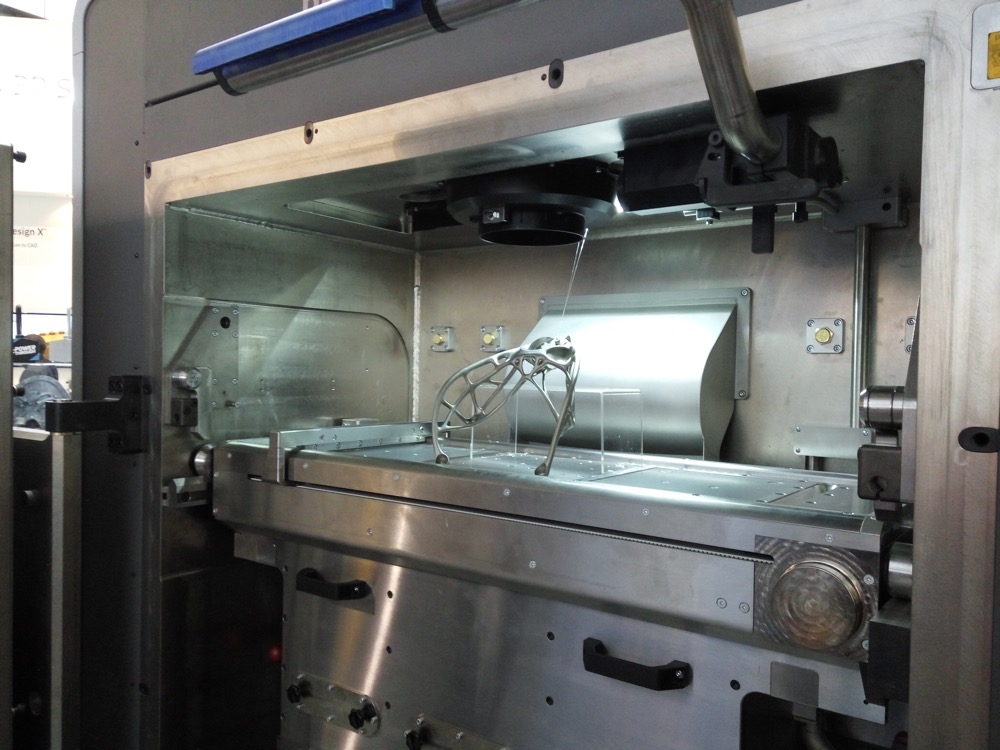 And also to give visibility to smaller 3D printing channels and help you find some great video content!
And also to give visibility to smaller 3D printing channels and help you find some great video content!
A selection of great 3D printing channels on YouTube
Make Anything // 3D Printing Channel
- Creator name: Devin Montes
- Country: United States
- Most popular video: Ambiguous Cylinder Illusion // How it Works
- Patreon: You can support Devin on Patreon by clicking here.
Make Anything is the biggest YouTube channel specialized in 3D printing. In his videos, Devin builds fun 3D printed objects and also gives useful 3D printing tips. Devin’s videos often have the potential to become viral and appeal to watchers way beyond the 3D printing community. Devin loves to use optical illusions and tricks to make visually striking 3D printing videos such as his famous Super Satisfying Twist Containers.
Thomas Sanladerer
- Country: Germany
- Most popular video: 3D printing guides: Setting up auto bed tramming leveling tilt compensation!
- Patreon: If you like his videos, you can support Thomas on Patreon by clicking here.
Tom is among the most popular 3D printing YouTube creators and there is a reason for that. His channel is a healthy mix of useful tips, in-depth tutorials, as well as balanced and thorough reviews. The German YouTube star also loves to test the limits of the 3D printers he reviews, for example by carrying out experiments such as in this awesome “Destructive testing: which 3D prints are bulletproof?” video. Tom’s channel is rather “serious”: you won’t find here clickbait/viral videos but researched, well-produced and insightful content. That’s actually what we love!
Thomas Sanladerer3D Printing Nerd
- Creator name: Joel Telling
- Country: United States
- Most popular video: 3D Printing and Testing the Makerbot Coin Sorter
- Patreon: You can support Joel on Patreon by clicking here.
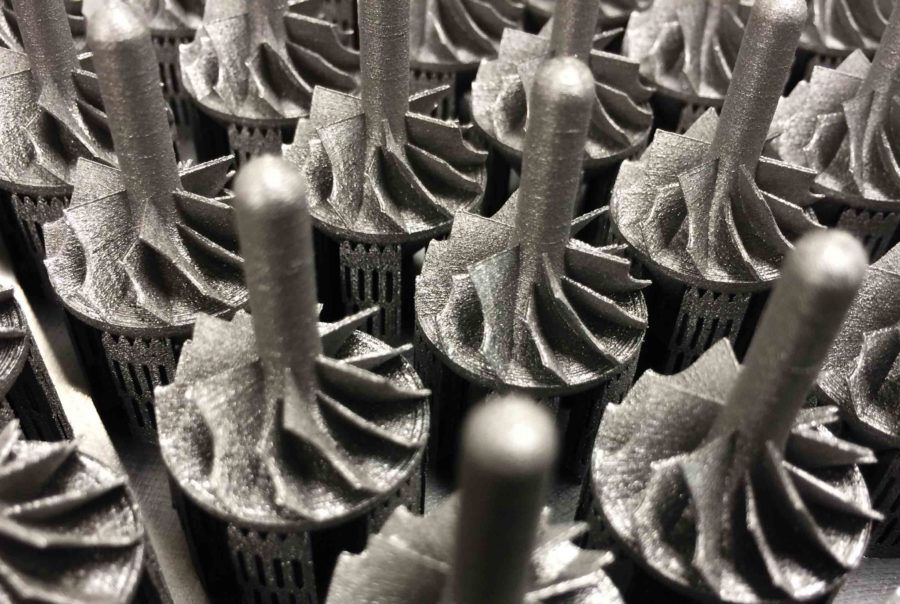
In the span of a few years, Joel became a fixture of the 3D printing community. His outgoing personality, infectious good mood, and relentless social media presence enabled him to become a great ambassador of the 3D printing community. On his 3D Printing Nerd YouTube channel, you can find all kinds of 3D printing-related content: from unboxings to trade shows visits, outstanding prints, and more, everyone will find something they love. In March 2017, Joel’s coin sorter video went viral, which boosted his channel overall, setting him on track to break the 100k subscribers’ bar in the coming weeks. An amazing and well-deserved achievement for one of the hardest-working creators on this list. To top it all, Joel often uses his huge social media reach to promote less established Youtubers. This guy is the best friend any 3D printing addict wants! What else can we add? Just one thing: #HighFive!
3D Printing NerdMaker’s Muse
- Creator name: Angus Deveson
- Country: Australia
- Most popular video: Hacking Vase Mode – 3D Printing Experiments
- Patreon: if you like his videos, you can support Angus on Patreon by clicking here.

Maker’s Muse is one of the most established 3D printing creators on YouTube. On his channel, Angus carries out in-depth 3D printer reviews and provides lots of useful tips and educational videos. One thing you should know: Angus has a thing for torturing 3D printers, not for the sake of it (we think!) but rather to push the machines to their limits. For example, he loves designing insanely complex 3D models of objects super challenging to print! Angus recently started focusing on resin-based 3D printers, making his channel stand out as the vast majority of 3D printer videos focus on FFF/FDM 3D printers. He also often puts dirt-cheap 3D printers to the test and debunks any phony Marketing promises. All in all, a must-subscribe to channel if you’re into 3D printing!
Maker’s MuseNaomi ‘SexyCyborg’ Wu
- Creator name: Naomi Wu
- Country: China
- Most popular video: Infinity Skirt Build
Naomi is a maker and web developer based in Shenzen, China.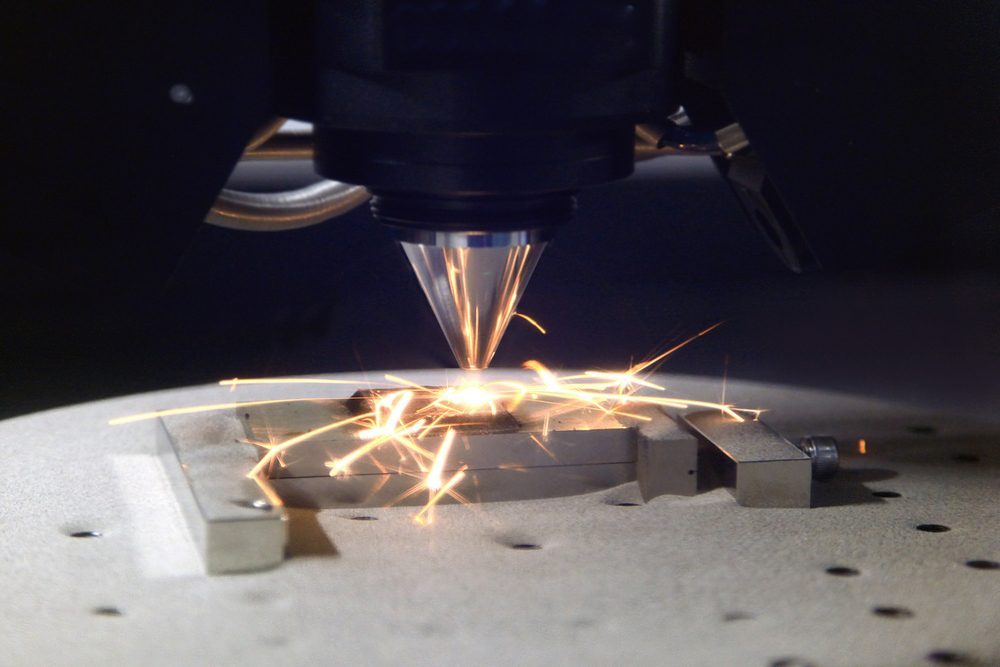 Naomi is passionate about 3D printing technology among others she uses in her popular videos. She often visits maker fairs and trade shows in Asia, producing awesome and immersive 360° videos to show the rest of the world that Asia is also a hotbed with active local 3D printing/maker communities. Naomi is also one of the few voices defending minorities in the maker’s community. Be that the overwhelming domination of the white male demographic in 3D printing/maker media or the stereotypes attached to female makers, Naomi never lacks words to smartly bring people’s attention to these important topics – always respectfully and educationally. So don’t be fooled by her SexyCyborg moniker, Naomi is much more than that.
Naomi is passionate about 3D printing technology among others she uses in her popular videos. She often visits maker fairs and trade shows in Asia, producing awesome and immersive 360° videos to show the rest of the world that Asia is also a hotbed with active local 3D printing/maker communities. Naomi is also one of the few voices defending minorities in the maker’s community. Be that the overwhelming domination of the white male demographic in 3D printing/maker media or the stereotypes attached to female makers, Naomi never lacks words to smartly bring people’s attention to these important topics – always respectfully and educationally. So don’t be fooled by her SexyCyborg moniker, Naomi is much more than that.
JAT.MN
- Creator name: Dustin Phillips
- Country: United States
- Most popular video: Do not Pre Order the TIKO 3D printer until you watch this video
Dustin, aka the Jatman, is a very active and rising Youtuber and 3D printing evangelist. Despite being fairly recent, his channel is growing super fast, thanks to Dustin’s always thorough reviews and his overall 3D printing expertise. One thing that makes this channel stand out: the weekly live stream series “3D Printing Tonight”, a kind of late-night show where he discusses the week’s hot topics (check out the infamous Tiko videos!) and does Q/A sessions. Dustin is among the most involved members of the 3D printing community, with very active social media profiles and regular participation in events or guest videos. No doubt Dustin is on the right track to be a top 3D printing Youtuber, so get on board now and subscribe!
Despite being fairly recent, his channel is growing super fast, thanks to Dustin’s always thorough reviews and his overall 3D printing expertise. One thing that makes this channel stand out: the weekly live stream series “3D Printing Tonight”, a kind of late-night show where he discusses the week’s hot topics (check out the infamous Tiko videos!) and does Q/A sessions. Dustin is among the most involved members of the 3D printing community, with very active social media profiles and regular participation in events or guest videos. No doubt Dustin is on the right track to be a top 3D printing Youtuber, so get on board now and subscribe!
Chaos Core Tech
- Creator name: Garrett
- Country: United States
- Most popular video: 3D Printed Slimes [Slime Rancher] – Boom, Phosphor, Rad & Honey!
Garrett is a programmer passionate about 3D printing and making in general. On his channel, he shares his tips to design and 3D print characters from comics, movies, or video games. From South Park Christmas tree characters to sword design tutorials on Fusion360, Garrett is never short of inspiration to create new videos and share them with his audience!
On his channel, he shares his tips to design and 3D print characters from comics, movies, or video games. From South Park Christmas tree characters to sword design tutorials on Fusion360, Garrett is never short of inspiration to create new videos and share them with his audience!
A Pyro Design
- Creator name: Travis
- Country: United States
- Most popular video: 3d animated Family Guy cool whip scene
- Patreon: you can support Travis in his mission to bring logos to life by becoming one of his patrons by clicking here.
On his YouTube channel, Travis shares insights on his process to create three-dimensional logos from 2D images. You can watch the whole process from the designing part to the 3D printing part. Travis often collaborates with other 3D printing creators to bring their logos to life or create insanely cool objects such as this retro Sonic the Hedgehog logo, with Chaos Core Tech.
Abuzz Designs
- Creator name: Lauren Renee
- Country: United States
- Most popular video: DIY Wall Ombre Painted Canvas
- Patreon: Lauren needs patrons’ help to be able to keep making awesome videos. You can support her by clicking here and contribute to her Patreon.
Lauren is a passionate designer and maker, sharing her passion on her YouTube channel with original videos such as tutorials to create Halloween costumes, gift cards, and even yummy-looking recipes. Lauren is one of the few very active women of the 3D printing community. She quickly managed to connect with many other makers, her always positive attitude certainly played a part in the success of her channel.
Abuzz DesignsCHEP
- Creator name: Chuck Hellebuyck
- Country: United States
- Most popular video: Metal Inserts on a 3D Print – Video #020
Chuck is a seasoned maker and 3D printing user with extensive experience in electronics.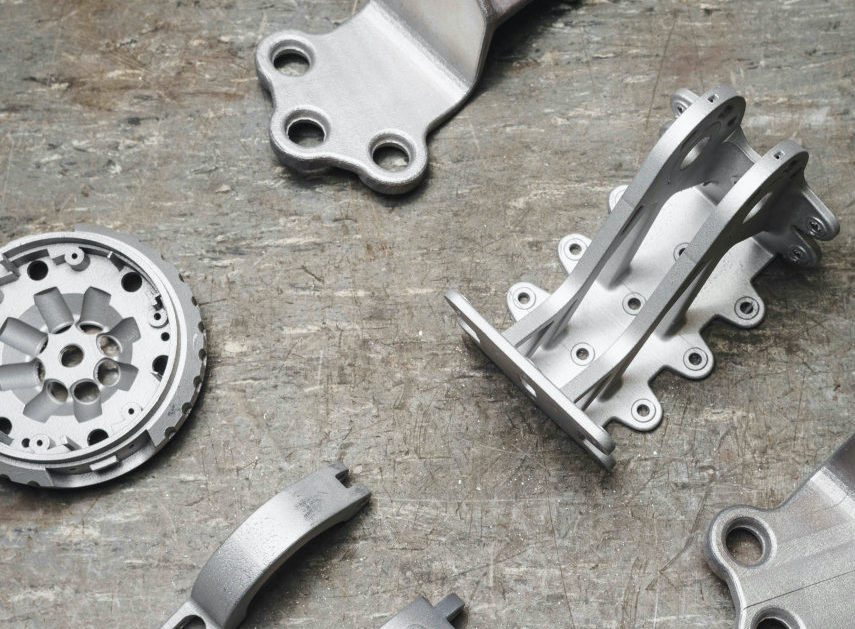 On his YouTube channel, Chuck focuses on practical uses of 3D printing in his famous show called Filament Friday. You can, for instance, learn how to use 3D printing to repair a broken broom handle. Tired of printing useless plastic gadgets? Check out Chuck’s channel now!
On his YouTube channel, Chuck focuses on practical uses of 3D printing in his famous show called Filament Friday. You can, for instance, learn how to use 3D printing to repair a broken broom handle. Tired of printing useless plastic gadgets? Check out Chuck’s channel now!
Richard Horne
- Country : United Kingdom
- Most popular video: RepRap 3DR Delta 3D printer
Richard, also known online as RichRap, is a long-time maker and 3D printing user from the UK. On his channel, Richard focuses on quality over quantity: there are few but in-depth and highly instructive 3D printer reviews. As his nickname RichRap suggests, he is also very involved in the RepRap movement. A great no-frills 3D printing YouTube channel.
Richard HorneDaniel Norée
- Country: Sweden
- Most popular video: The OpenRC Truggy, A experimental 3D Printed R/C car
Daniel Norée is an award-winning Swedish 3D designer and 3D printing evangelist. He also is the author of The OpenR/C Project and The OpenRailway Project, and the inventor of the famous Benchy. In his videos, Daniel provides guidance on how to build remote-controlled cars or drones using 3D printing. He also showcases nice 3D printed objects such as a snowball maker or wrenches. A great channel from one of the pillars of the 3D printing community!
He also is the author of The OpenR/C Project and The OpenRailway Project, and the inventor of the famous Benchy. In his videos, Daniel provides guidance on how to build remote-controlled cars or drones using 3D printing. He also showcases nice 3D printed objects such as a snowball maker or wrenches. A great channel from one of the pillars of the 3D printing community!
3D printing on Youtube: trends and takeaways
There are MANY YouTube channels about 3D printing.
Since our last update, the number of 3D printing-related YT channels has grown sharply, showing how active the 3D printing community is. We now have 79 channels on this list, and many of them are growing really fast!
Live streaming is on the rise.
In 2016, YouTube added a live stream option and many 3D printing creators are making the most of it.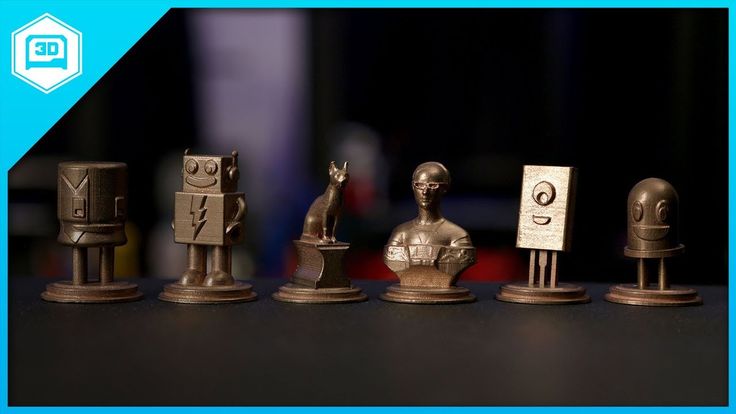 Often longer than regular videos, YouTube live streams are used for live unboxing videos but also to make innovative formats such as the 3D Printing Tonight show by JAT.MN.
Often longer than regular videos, YouTube live streams are used for live unboxing videos but also to make innovative formats such as the 3D Printing Tonight show by JAT.MN.
The vast majority of 3D printing Youtubers are – surprise – white men. That’s a fact, and it’s becoming somewhat preoccupying, as diversity in media is always important (yes, YouTube is a media!). In terms of gender balance, we only list a handful of women with a 3D printing Youtube channel, and that’s not enough. Let’s not even get started on the overwhelming caucasian domination…
This hot topic is of course not limited to 3D printing and not easy to tackle but some voices are trying to make themselves heard, from Naomi Wu to the more controversial 3DPConfidential on Twitter. The diversity issue and lack of visibility for minorities in the makers’ community is definitely a hot topic that we hope will be addressed collectively in the future.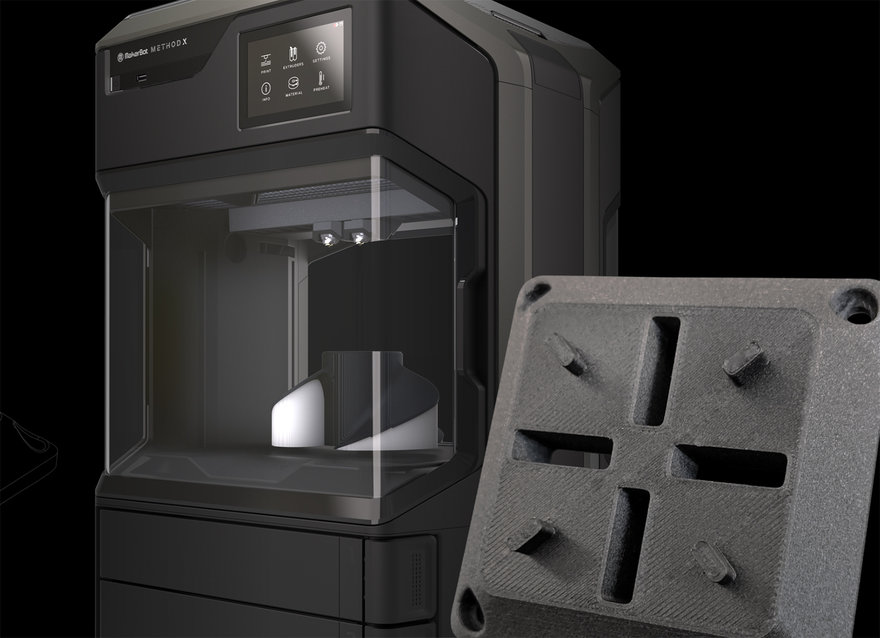
The brilliant @leahbuechley. @make then fixed "the problem"- by no longer releasing embarrassing demographic data. https://t.co/ljONAJ7DO7 pic.twitter.com/Wh5qrcmlkP
— Naomi Wu 机械妖姬 (@RealSexyCyborg) March 19, 2017
YouTube is a great (and free!) promotion channel for 3D printer brands.
3D printing companies are now using YouTubers to launch and promote their new products, by sending test units to prominent community members, sometimes flying them to events. Among the most successful 3D printer launches relying on heavy YouTube promotion were the Prusa i3 MK2, the Ultimaker 3, and the BCN3D Sigma R17.
Sending test units to 3D printing Youtubers can be a very efficient strategy when your machine is on point but can also backfire (ask the guys at Tiko or Tevo…). Best practices include building a friendly relationship with these Youtubers and the 3D printing community, ensure they have all they need to carry out the tests in optimal conditions, and address any issue or negative feedback which may arise. Also, make sure your 3D printer is a great product!
Also, make sure your 3D printer is a great product!
Looks like the @bcn3dtech Sigma R17 season has officially started!
— Aniwaa (@Aniwaa3d) March 6, 2017
Can't wait to see what these guys think about it 😊 pic.twitter.com/jBpUbWYTWY
How to make money with a Youtube channel?
Advertising
The easiest way to monetize a YouTube channel is advertising: YouTube being a part of Google, it is very easy to start showing ads on your videos through the AdSense program. To earn money from views on your videos, you can show banners or video ads in your videos and generate revenue every time a viewer will click on an ad.
Affiliate programs
Many YouTubers participate in affiliate programs, the most popular one being Amazon Associates. Thanks to these 3D printing affiliate marketing programs, creators can earn a commission via special links.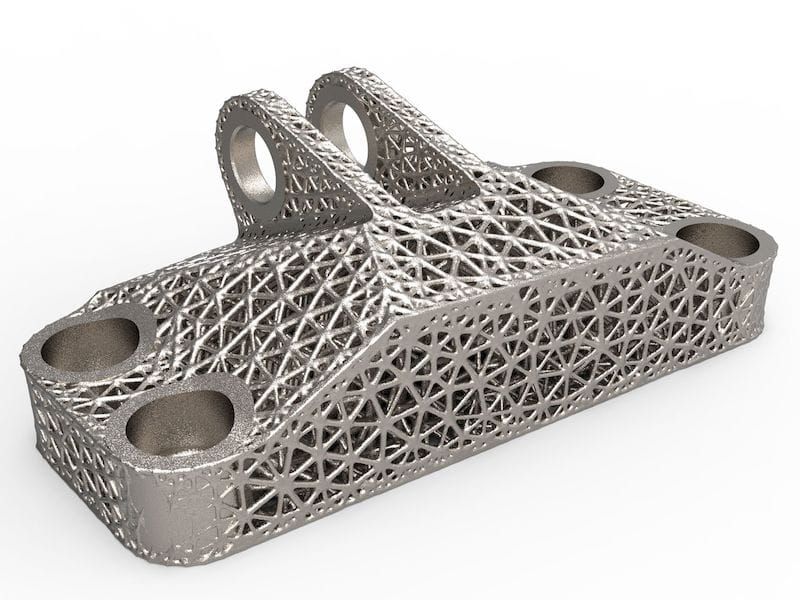 If you make a purchase on the website (Amazon or others) using their custom link, the creator will receive a commission. If you want to support some of your favorites 3D printing creators while online shopping, just use their affiliate links usually found in the description fields below a video.
If you make a purchase on the website (Amazon or others) using their custom link, the creator will receive a commission. If you want to support some of your favorites 3D printing creators while online shopping, just use their affiliate links usually found in the description fields below a video.
Another way to earn $$$ revenue or get free products through YouTube is to get sponsored by a brand or establish a partnership with them. In the case of 3D printing, 3D printers and 3D scanners brands can send you 3D printers or 3D scanners for reviews.
Starting a Patreon
Patreon is a global crowdfunding platform where content creators of all kinds can get sustainable income from recurring donations from fans. Many 3D printing YouTube channels have a Patreon where you can contribute with a monthly donation, starting as low as a few dollars.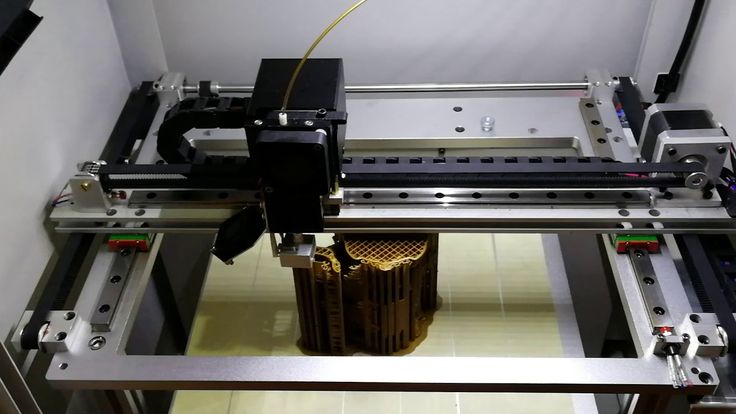 Some of the most established YouTubers on our list can earn thousands of dollars each month thanks to their Patreon. Thomas Sanladerer, for instance, makes around $2k per month thanks to donations from his fans, thus providing more financial freedom to run his channel.
Some of the most established YouTubers on our list can earn thousands of dollars each month thanks to their Patreon. Thomas Sanladerer, for instance, makes around $2k per month thanks to donations from his fans, thus providing more financial freedom to run his channel.
Joining a multi-channel network (MCN)
According to Wikipedia, “a multi-channel network (MCN) is an organization that works with video platforms such as YouTube, to offer assistance to a channel owner in areas such as “product, programming, funding, cross-promotion, partner management, digital rights management, monetization/sales, and/or audience development” in exchange for a percentage of the ad revenue from the channel”. MCN is now common in the world of YouTubers looking to monetize their channel, and several makers from our list have already joined an MCN.
If you’re looking to take your 3D printing YouTube channel to the next step, this could be the way to go. No need to have tens of thousands of subscribers either, as MCN is not only focusing on reach but also on the engagement of the audience on high potential niches such as additive manufacturing.
No need to have tens of thousands of subscribers either, as MCN is not only focusing on reach but also on the engagement of the audience on high potential niches such as additive manufacturing.
Soooooo…. 5/10 of our top channels are #3Dprinting– Kill me? <3 U @joeltelling @THEJATMN @apyrodesign @pressreset @3DPProfessor @BINMedia
— Anthony Reyes (@BlindGaming) March 31, 2017
How to use our list of the 3D printing channels on YouTube
Subs count
Here is the number of subscribers as of September 13, 2018, 18 months after the last subs count we did in March 2017. This allowed us to calculate an 18-month growth rate for channels featured in this list.
Growth
This is the growth percentage of the channel, based on the evolution of the total number of subscribers over the past 18 months (from March 2017 to September 2018).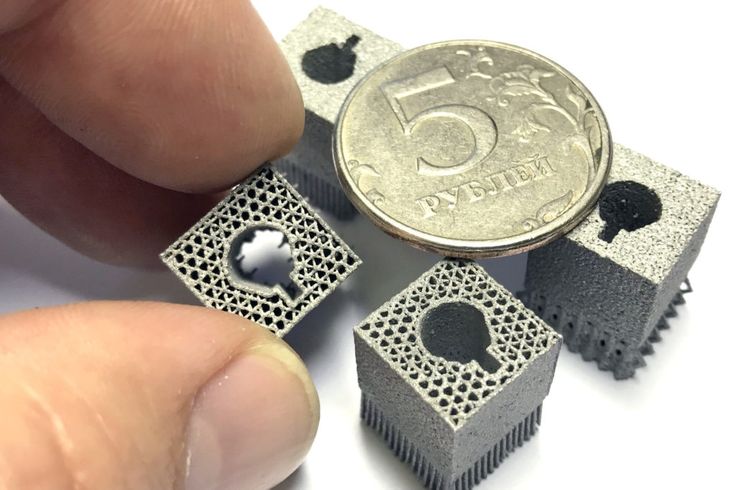 This growth rate gives an indication of which channels are growing fast. We highlighted the super fast-growing channels with a little fire emoji (growth rate above 500%).
This growth rate gives an indication of which channels are growing fast. We highlighted the super fast-growing channels with a little fire emoji (growth rate above 500%).
Category
This time, we’ve decided to categorize 3D printing YouTubers to make the list easier to use:
- 3D printing: this is the main category, covering YouTube channels focusing solely on 3D printing and producing videos such as 3D printers unboxings, tests, tips, and general information about additive manufacturing.
- Maker: we regrouped here the channels of maker creators who regularly offer 3D printing-related content but whose channel is not fully dedicated to 3D printing. We thought it was interesting to expand a bit the scope of the list to see how established makers make the most of 3D printing for their projects.
- Tech reviewer: there are many tech reviewers with highly successful YouTube channels, and some of them have a knack for 3D printers! Why not include them here?
- Cosplay/props: this category covers creators and makers who use 3D printing to make cosplay, movie accessories, and props.
 A very popular and active YouTube group with a nice overlap with the 3D printing community.
A very popular and active YouTube group with a nice overlap with the 3D printing community.
Country of origin
Pretty straightforward, because it’s cool to see how global the 3D printing movement has become (although most channels are still from the US).
Note:
For this list, we selected only 3D printing YouTube channels managed by independent creators. However, some 3D printing companies run great YouTube channels with instructive videos. For example, MatterHackers, a leading US reseller of 3D printers, produces lots of great content, from reviews to tutorials.
The different types of 3D printing YouTube videos
Tutorials
In tutorials, 3D printing Youtubers give step-by-step instructions on topics such as how to build a 3D printer in kit, how to improve your 3D printing techniques, and many more. You can also find 3D printing video tutorials on how to solve general 3D printer problems such as nozzle clogging.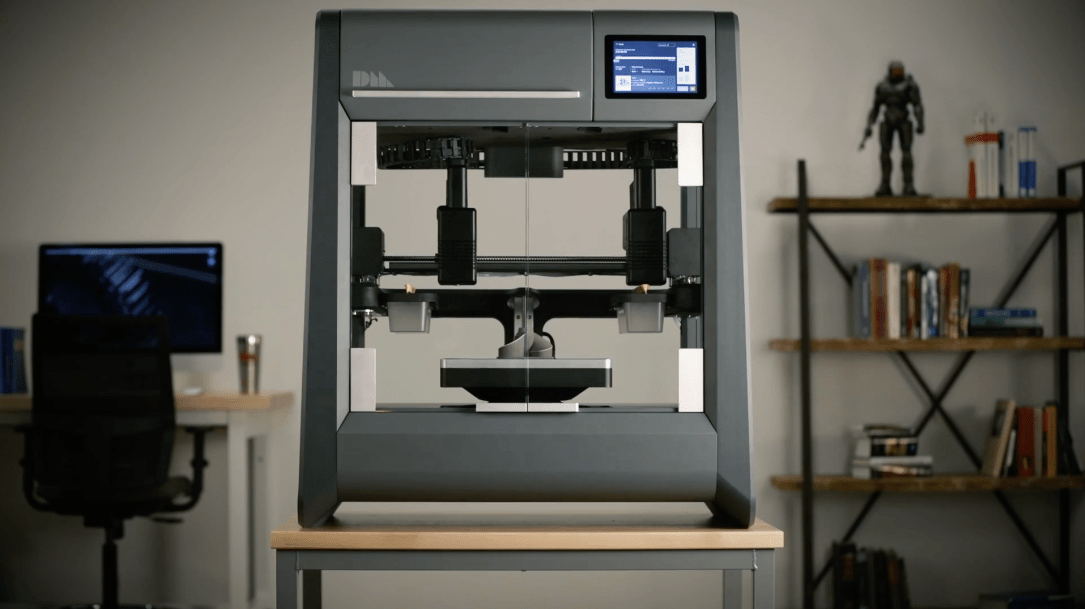
Unboxings
Unboxing is a video where Youtubers unbox 3D printers, 3D scanners, or 3D filaments and share their first impressions with the viewers. 3D printers unboxing videos are quite popular and they usually cover every step, from opening the cardboard box to launching the first print. These videos are very popular on YouTube (not only for 3D printers!), as they allow viewers to share the thrill of unboxing a brand new machine and also provide unfiltered insights for potential buyers.
Reviews
For 3D printer reviews, manufacturers usually send a test unit to one or several Youtubers to get a video review and give exposure to their machine in the 3D printing community. Some creators also make reviews of 3D printers or filaments they purchased themselves, thus avoiding the potential conflict of interest.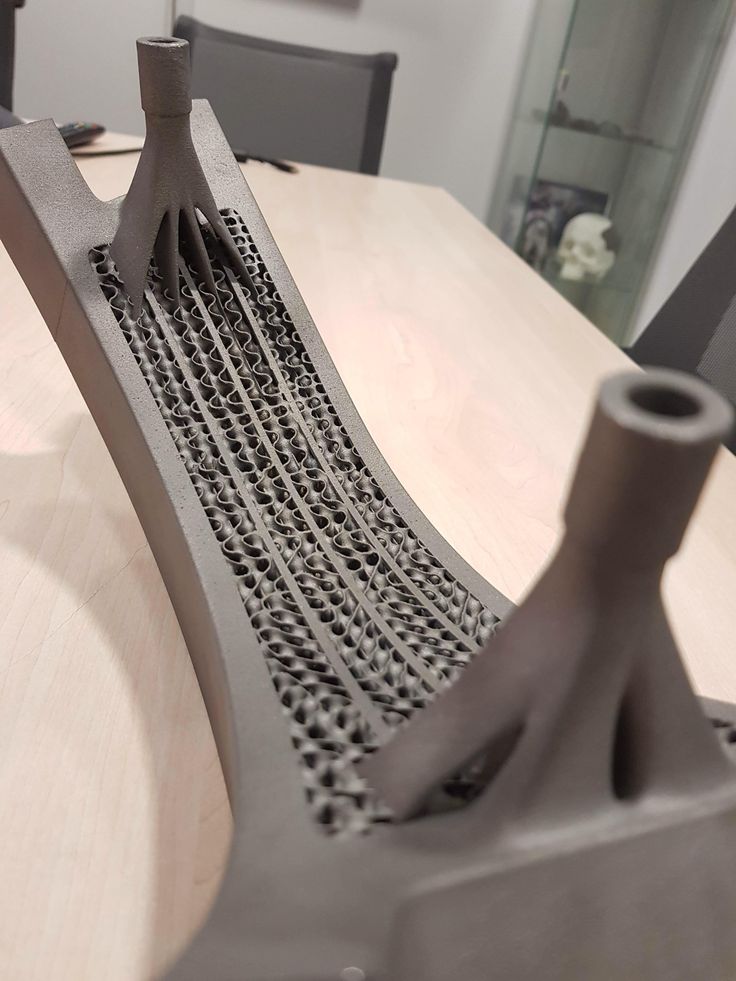
Lately, a growing number of 3D printer and 3D filament brands have started to use YouTube reviews as a promotion channel, sending multiple 3D printer test units to influential channels and actively engaging with the community. Most YouTubers do not charge for a 3D printer review but they can sometimes keep the product for free.
Tips
In 3D printing tips videos, you will find ideas on how to solve a problem on your 3D printer or how to make some improvements to your 3D printer and your 3D prints.
How to become 3D printing Youtuber?
The beauty of YouTube is that anyone with basic video equipment can become a creator. To launch a 3D printing YouTube channel, you basically need a recording device, a 3D printer, and a good dose of motivation! Of course, if you intend to make tutorials or hands-on videos about 3D printing, having access to a 3D printer is a plus (some decent DIY 3D printers are available for less than $200).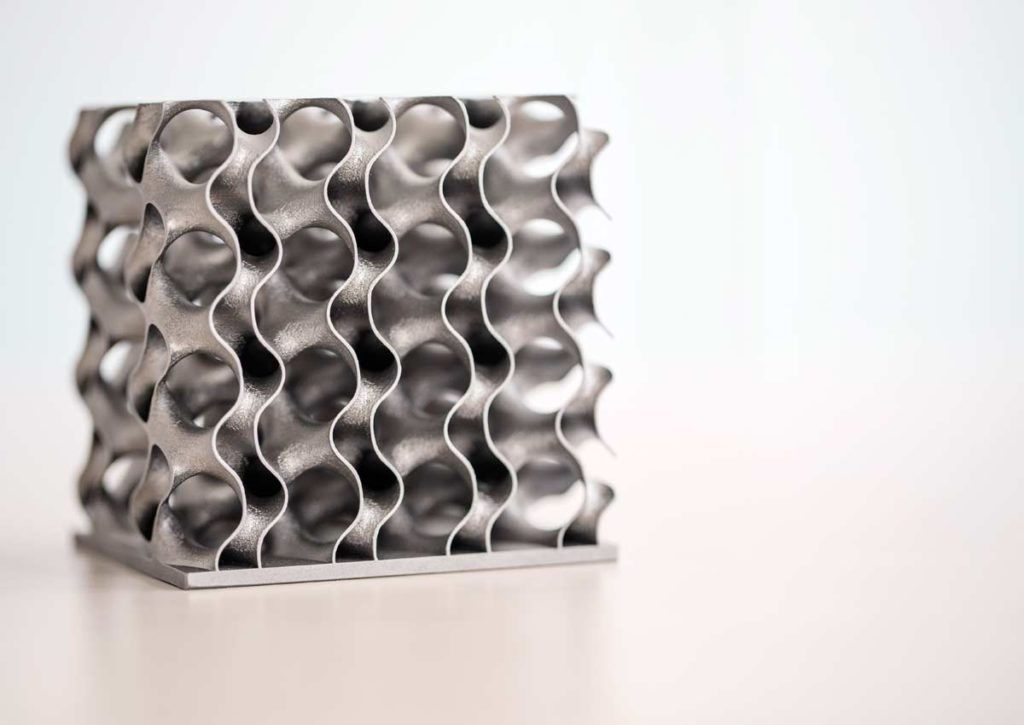 Note that the most popular YouTubers not only use top-notch video and audio gear, they also have great video production and editing skills, which take a lot of practice to acquire.
Note that the most popular YouTubers not only use top-notch video and audio gear, they also have great video production and editing skills, which take a lot of practice to acquire.
Once you’ve started your YouTube channel, you want to build a following and promote it on social media so people can discover your work. The 3D printing community is very active on Twitter, Facebook, and 3D printing forums. To find the best places to promote your channel, you can check our article on the best forums, communities, and discussion groups about 3D printing. If you’re planning to launch your channel, let us know about it, we will check it out and add it to our list of the best YouTube channels.
3D printing YoutubersConclusion on the best 3D printing YouTube channels
The 3D printing community is a fast-growing and very active group. The number of YouTube channels specialized in 3D printing keeps growing every month and some of them are now becoming established brands with a large following and professional approach to what started as a passion side project. It is great to see this branch of the 3D printing media landscape grow and structure itself!
It is great to see this branch of the 3D printing media landscape grow and structure itself!
We were the first website to provide a comprehensive overview and analysis of the 3D printing YouTube community and will continue to update our list of creators and publish updates. Stay tuned. And should you decide to open a YouTube channel, please contact us so we can add you to the list. You can give us your opinion on Facebook and Twitter.
How metal 3D printers work. Overview of SLM and DMLS technologies. additive manufacturing. 3D metal printing.
Metal 3D printing. Additive technologies.
SLM or DMLS: what's the difference?
Hello everyone, Friends! 3DTool is with you!
BLT metal 3D printer catalog
Selective laser melting ( SLM ) and direct metal laser sintering ( DMLS ) are two additive manufacturing processes that belong to the family of 3D printing using the powder layer method. The two technologies have much in common: they both use a laser to selectively melt (or melt) metal powder particles, bonding them together and creating a pattern layer by layer. In addition, the materials used in both processes are metals in granular form.
The two technologies have much in common: they both use a laser to selectively melt (or melt) metal powder particles, bonding them together and creating a pattern layer by layer. In addition, the materials used in both processes are metals in granular form.
The differences between SLM and DMLS come down to the basics of the particle bonding process: SLM uses metal powders with a single melting point and completely melts the particles, while in DMLS the powder consists of materials with variable melting points. nine0014
Specifically:
SLM produces single metal parts while DMLS produces metal alloy parts.
Both SLM and DMLS technologies are used in industry to create final engineering products.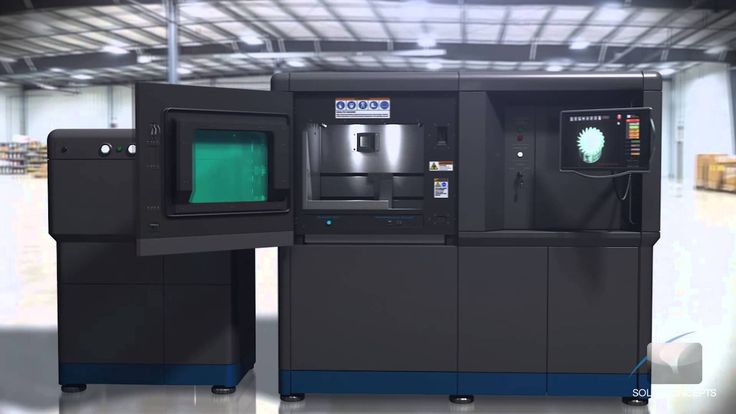 In this article, we will use the term "metal 3D printing" to summarize the 2 technologies. We will also describe the main mechanisms of the manufacturing process that are necessary for engineers to understand the advantages and disadvantages of these technologies. nine0002 There are other manufacturing processes for producing dense metal parts, such as electron beam melting (EBM) and ultrasonic additive manufacturing (UAM). Their availability and distribution is rather limited, so they will not be presented in this article.
In this article, we will use the term "metal 3D printing" to summarize the 2 technologies. We will also describe the main mechanisms of the manufacturing process that are necessary for engineers to understand the advantages and disadvantages of these technologies. nine0002 There are other manufacturing processes for producing dense metal parts, such as electron beam melting (EBM) and ultrasonic additive manufacturing (UAM). Their availability and distribution is rather limited, so they will not be presented in this article.
How 3D printing with SLM or DMLS metal works.
How does metal 3D printing work? The basic manufacturing process for SLM and DMLS is very similar.
1. The printing chamber is first filled with an inert gas (such as argon) to minimize the oxidation of the metal powder. It then heats up to the optimum operating temperature. nine0002 2. A layer of powder is spread over the platform, a powerful laser makes passes along a predetermined path in the program, fusing the metal particles together and creating the next layer.
3. When the sintering process is completed, the platform moves down 1 layer. Next, another thin layer of metal powder is applied. The process is repeated until the entire model is printed.
When the printing process is completed, the metal powder already has strong bonds in the structure. Unlike the SLS process, parts are attached to the platform via support structures. The support in metal 3D printing is created from the same material as the base part. This condition is necessary to reduce deformations that may occur due to high processing temperatures. nine0002 When the 3D printer's chamber cools down to room temperature, excess powder is removed manually, such as with a brush. The parts are then typically heat treated while they are still attached to the platform. This is done to relieve any residual stresses.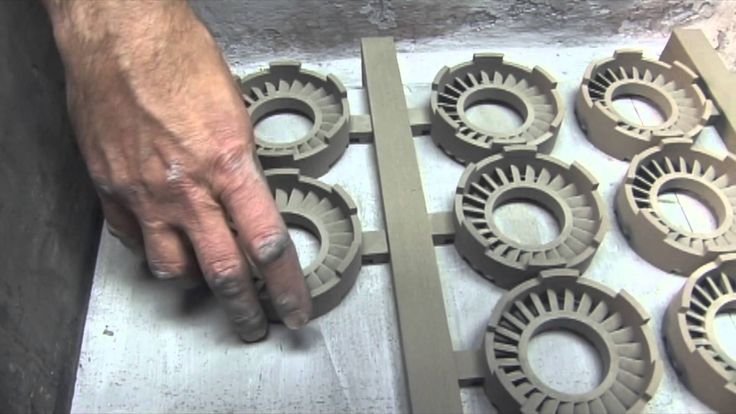 They can then be further processed. The removal of the part from the platform occurs by means of sawing.
They can then be further processed. The removal of the part from the platform occurs by means of sawing.
Scheme of operation of a 3D printer for metal.
In SLM and DMLS, almost all process parameters are set by the manufacturer. The layer height used in metal 3D printing varies from 20 to 50 microns and depends on the properties of the metal powder (fluidity, particle size distribution, shape, etc.). nine0002 The basic size of the print area on metal 3D printers is 200 x 150 x 150 mm, but there are also larger sizes of the working area. Printing accuracy is from 50 - 100 microns. As of 2020, metal 3D printers start at $150,000. For example, our company offers 3D metal printers from BLT.
metal 3D printers can be used for small batch production, but the 3D printing capabilities of such systems are more like those of mass production on FDM or SLA machines. nine0002 The metal powder in SLM and DMLS is recyclable: typically less than 5% is consumed.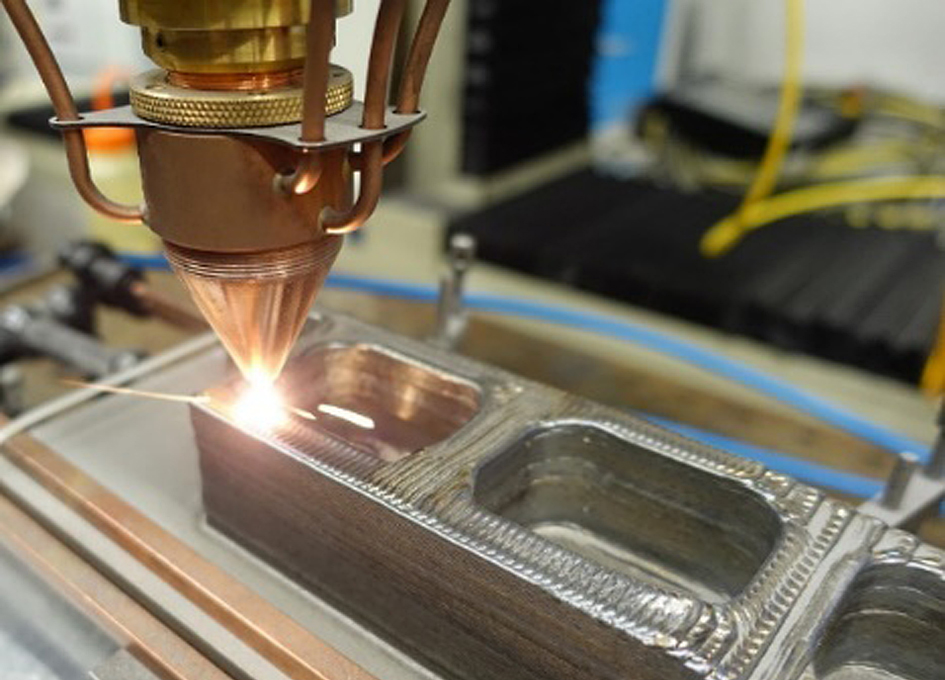 After each impression, the unused powder is collected and sieved, and then topped up with fresh material to the level required for the next production.
After each impression, the unused powder is collected and sieved, and then topped up with fresh material to the level required for the next production.
Waste in metal printing, are supports (support structures, without which it will not be possible to achieve a successful result). With too much support on the manufactured parts, the cost of the entire production will increase accordingly. nine0002
Adhesion between coats.
3D metal printing on BLT 3D printers
SLM and DMLS metal parts have almost isotropic mechanical and thermal properties. They are hard and have very little internal porosity (less than 0.2% in 3D printed condition and virtually non-existent after processing).
Metal printed parts have higher strength and hardness and are often more flexible than traditionally made parts. However, such metal becomes “tired” faster. nine0014
3D model support structure and part orientation on the work platform.

Support structures are always required when printing with metal, due to the very high processing temperatures. They are usually built using a lattice pattern.
Supports in metal 3D printing perform 3 functions:
• They form the basis for creating the first layer of the part.
• They secure the part to the platform and prevent it from deforming.
• They act as a heat sink, removing heat from the model. nine0014
Parts are often oriented at an angle. However, this will increase the amount of support required, the printing time, and ultimately the overall cost.
Deformation can also be minimized with laser sintering templates. This strategy prevents the accumulation of residual stresses in any particular direction and adds a characteristic surface texture to the part.
Since the cost of metal printing is very high, software simulations are often used to predict how a part will behave during processing.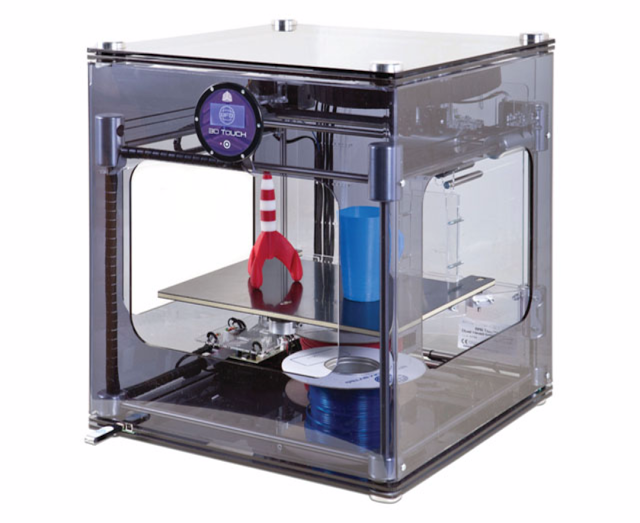 These topology optimization algorithms are otherwise used not only to increase mechanical performance and create lightweight parts, but also to minimize the need for supports and the likelihood of part distortion. nine0014
These topology optimization algorithms are otherwise used not only to increase mechanical performance and create lightweight parts, but also to minimize the need for supports and the likelihood of part distortion. nine0014
Hollow sections and lightweight structures.
An example of printing on a BLT 3D printer
Unlike polymer powder melt processes such as SLS, large hollow sections are not typically used in metal printing as the support would be very difficult to remove, if at all possible.
For internal channels larger than Ø 8 mm, it is recommended to use diamond or teardrop cross-sections instead of round ones, as they do not require support. More detailed recommendations on the design of SLM and DMLS can be found in other articles on this topic. nine0014
As an alternative to hollow sections, parts can be made with sheath and cores, which in turn are machined using different laser power and pass speeds, resulting in different material properties. The use of sheath and cores is very useful when making parts with a large solid section, as it greatly reduces printing time and reduces the chance of warping.
The use of sheath and cores is very useful when making parts with a large solid section, as it greatly reduces printing time and reduces the chance of warping.
The use of a lattice structure is a common strategy in metal 3D printing to reduce part weight. Topology optimization algorithms can also help design organic lightweight shapes. nine0014
Consumables for 3D metal printing.
SLM and DMLS technologies can produce parts from a wide range of metals and metal alloys, including aluminum, stainless steel, titanium, cobalt, chromium and inconel. These materials meet the needs of most industrial applications, from aerospace to medical applications. Precious metals such as gold, platinum, palladium and silver can also be processed, but their use is of a minor nature and is mainly limited to jewelry making. nine0014
The cost of metal powder is very high. For example, a kilogram of 316 stainless steel powder costs approximately $350-$450.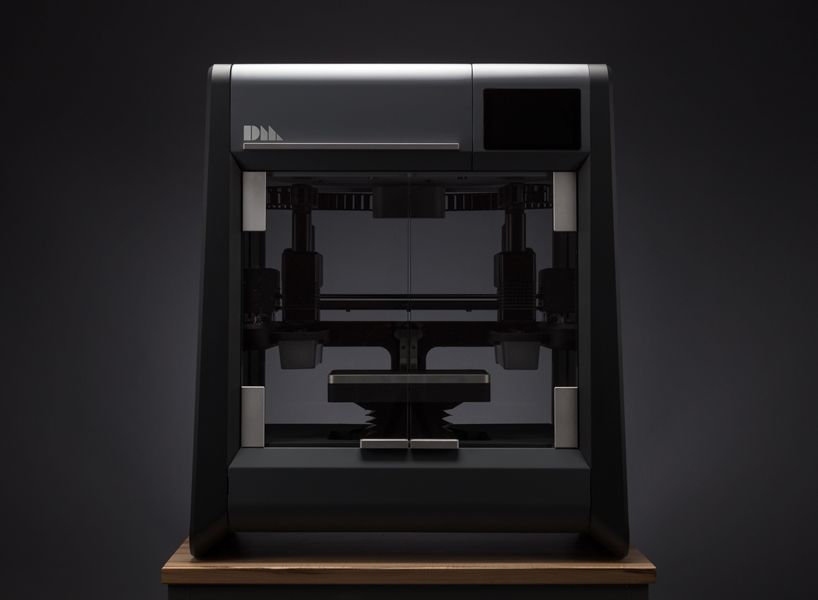 For this reason, minimizing part volume and the need for supports is key to maintaining optimal manufacturing cost.
For this reason, minimizing part volume and the need for supports is key to maintaining optimal manufacturing cost.
The main advantage of metal 3D printing is its compatibility with high-strength materials such as nickel or cobalt-chromium superalloys, which are very difficult to machine with traditional methods. Significant cost and time savings can be achieved by using metal 3D printing to create a near-clean shape part. Subsequently, such a part can be processed to a very high surface quality. nine0002
Metal post-processing.
Various post methods. treatments are used to improve the mechanical properties, accuracy and appearance of metal printed products.
Mandatory post-processing steps include the removal of loose powder and support structures, while heat treatment (heat annealing) is typically used to relieve residual stresses and improve the mechanical properties of the part.
CNC machining can be used for critical features (such as holes or threads).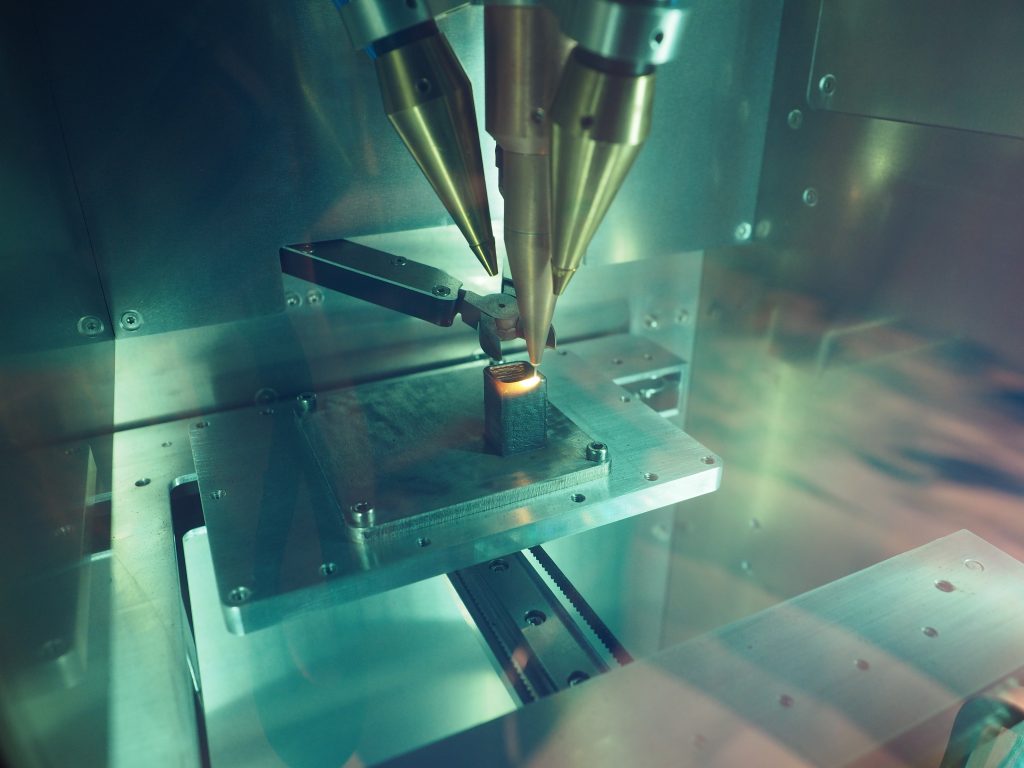 Sandblasting, plating, polishing, and micro-machining can improve the surface quality and fatigue strength of a metal printed part. nine0014
Sandblasting, plating, polishing, and micro-machining can improve the surface quality and fatigue strength of a metal printed part. nine0014
Advantages and disadvantages of metal 3D printing.
Pros:
1. Metal 3D printing can be used to make complex custom parts, with geometries that traditional manufacturing methods cannot provide.
2. Metal 3D printed parts can be optimized to increase their performance with minimal weight.
3. Metal 3D printed parts have excellent physical properties, metal 3D printers can print a wide range of metals and alloys. Includes difficult-to-machine materials and metal superalloys. nine0014
Cons:
1. Manufacturing costs associated with metal 3D printing are high. The cost of consumables is from $ 500 per 1 kg.
2. The size of the working area in metal 3D printers is limited.
Conclusions.
• Metal 3D printing is most suitable for complex, one-piece parts that are difficult or very expensive to manufacture using traditional methods, such as CNC.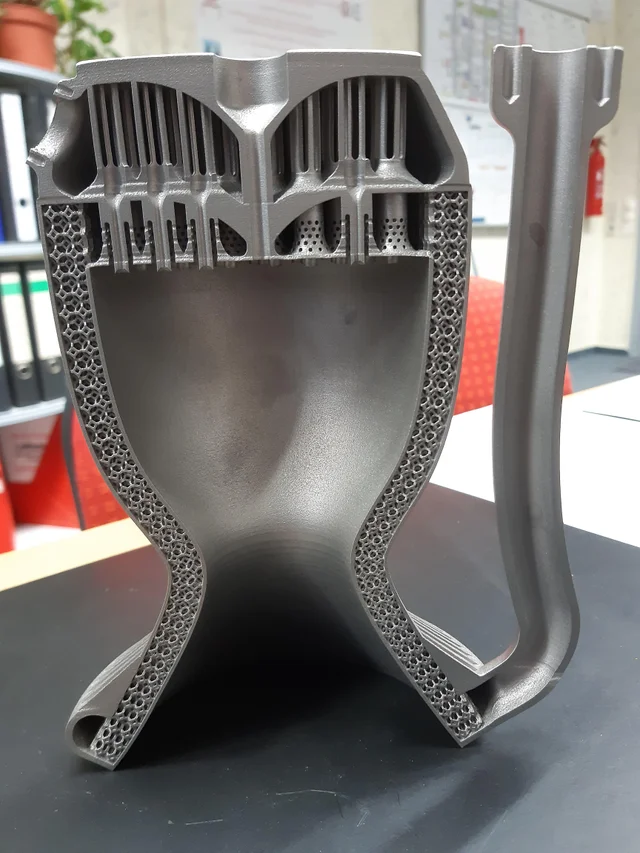
• Reducing the need for building supports, will significantly reduce the cost of printing with metal. nine0002 • 3D printed metal parts have excellent mechanical properties and can be made from a wide range of engineering materials, including superalloys.
And that's all we have! We hope the article was useful to you.
Catalog of 3D printers for metal BLT
You can purchase metal 3d printers, as well as any other 3d printers and CNC machines, by contacting us:
• By email: [email protected]
• By phone: 8(800)775-86-69
• Or on our website: http://3dtool.ru
Also, don't forget to subscribe to our YouTube channel:
Subscribe to our groups in social networks:
In contact with
how metal printing works on a 3D printer
Contents:
- Metal printing on a 3D printer
- How 3D technologies work
- Two main methods
- Video
Metal printing on a 3D printer (two main technologies)
The introduction of innovative technologies opens up new opportunities in various fields of human activity.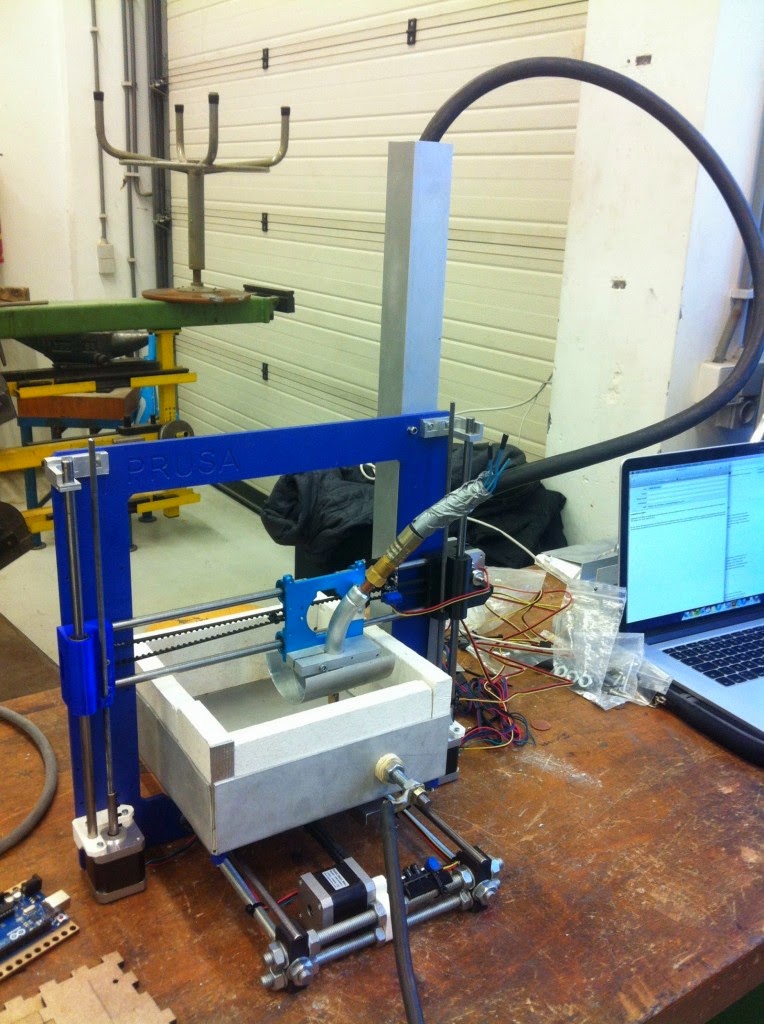 A modern 3D printer for printing on metal allows you to print high-precision structural elements that are in demand in the space, engineering, and aviation industries.
A modern 3D printer for printing on metal allows you to print high-precision structural elements that are in demand in the space, engineering, and aviation industries.
How 3D technology works
3D parts are produced using different metal powder melting methods (using a laser). But the basic principle of operation remains unchanged, so any 3D printer prints with metal in several stages, these are:
- filling the build chamber with an inert gas to minimize the oxidation of the starting material;
- heating to the temperature required for the production process.
- distribution of powder over the surface of the build platform;
- 3D scanning of the cross section of the starting material with a laser beam;
- melting and sintering of particles, which makes it possible to obtain a hard layer;
- offset of the platform by the amount of the resulting layer for applying the next one (until the object is formed). nine0204
The moment the metal laser 3D printer completes the process, the product is completely covered in powder.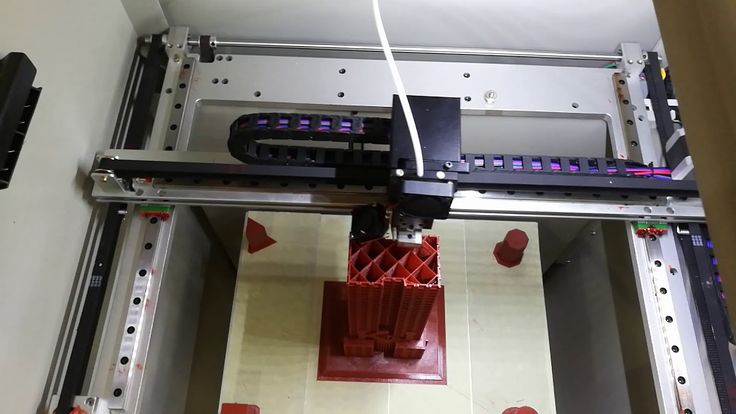 Therefore, until the chamber cools down completely (to avoid deformations), the object on the platform is fixed by the support area.
Therefore, until the chamber cools down completely (to avoid deformations), the object on the platform is fixed by the support area.
Two main methods
A modern metal 3D printer can use one of the two most common technologies - selective laser beam melting (SLM) or direct laser sintering (DMLS). Among the main differences between the methods, the principle of gluing the component should be mentioned:
- SLM - occurs as a result of complete melting of the powder;
- DMLS - individual particles are sintered (at lower temperatures compared to SLM) without passing into a liquid substance.
Unlike traditional casting or stamping, DMLS allows objects to be printed without internal stress. This ensures good technical characteristics of the parts. Today, manufacturers offer models that can use several melting options at once. nine0014
Among other techniques for bonding powder particles, mention should be made of the UAM (additive ultrasonic) or EBM (electron beam) melting process.